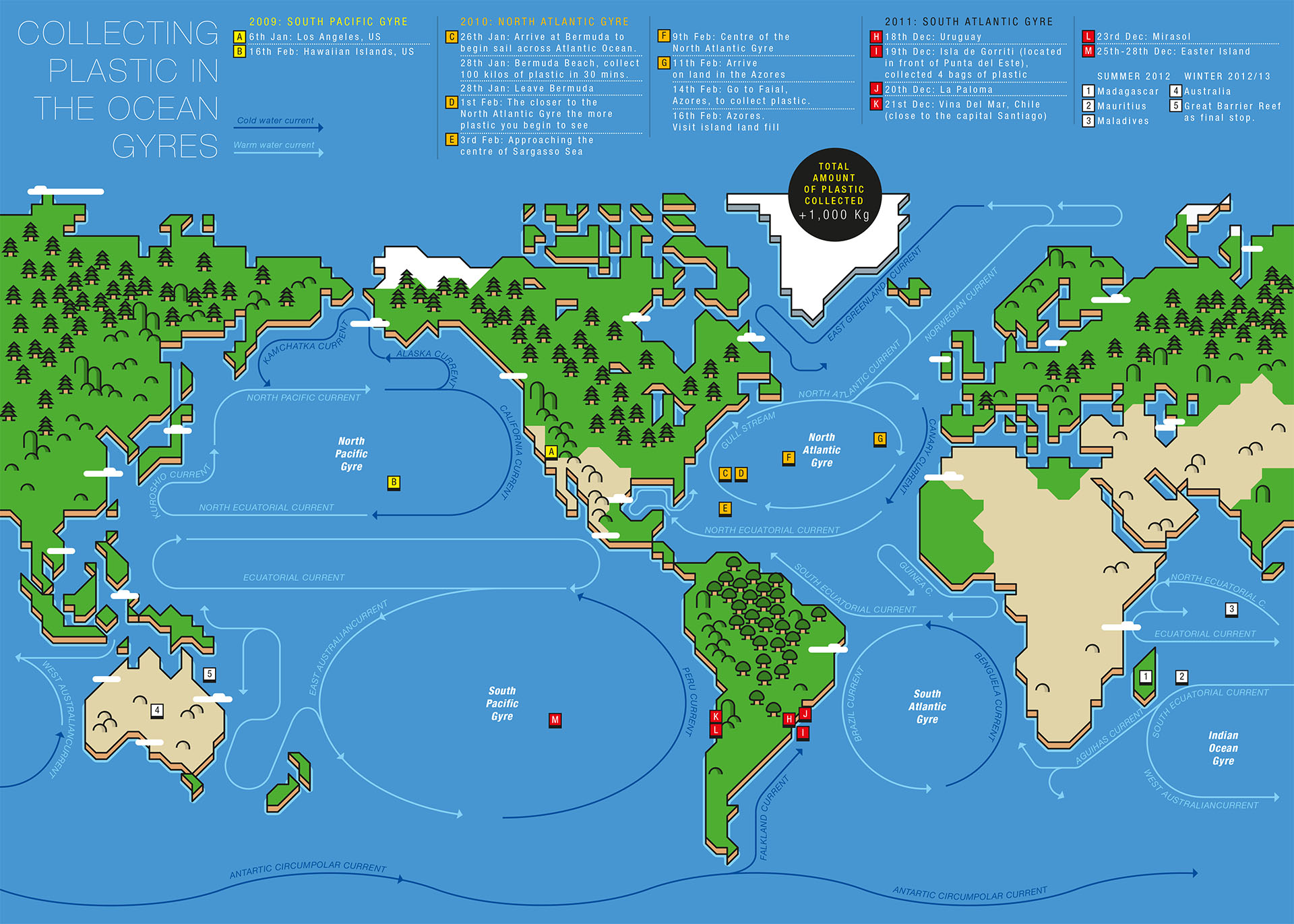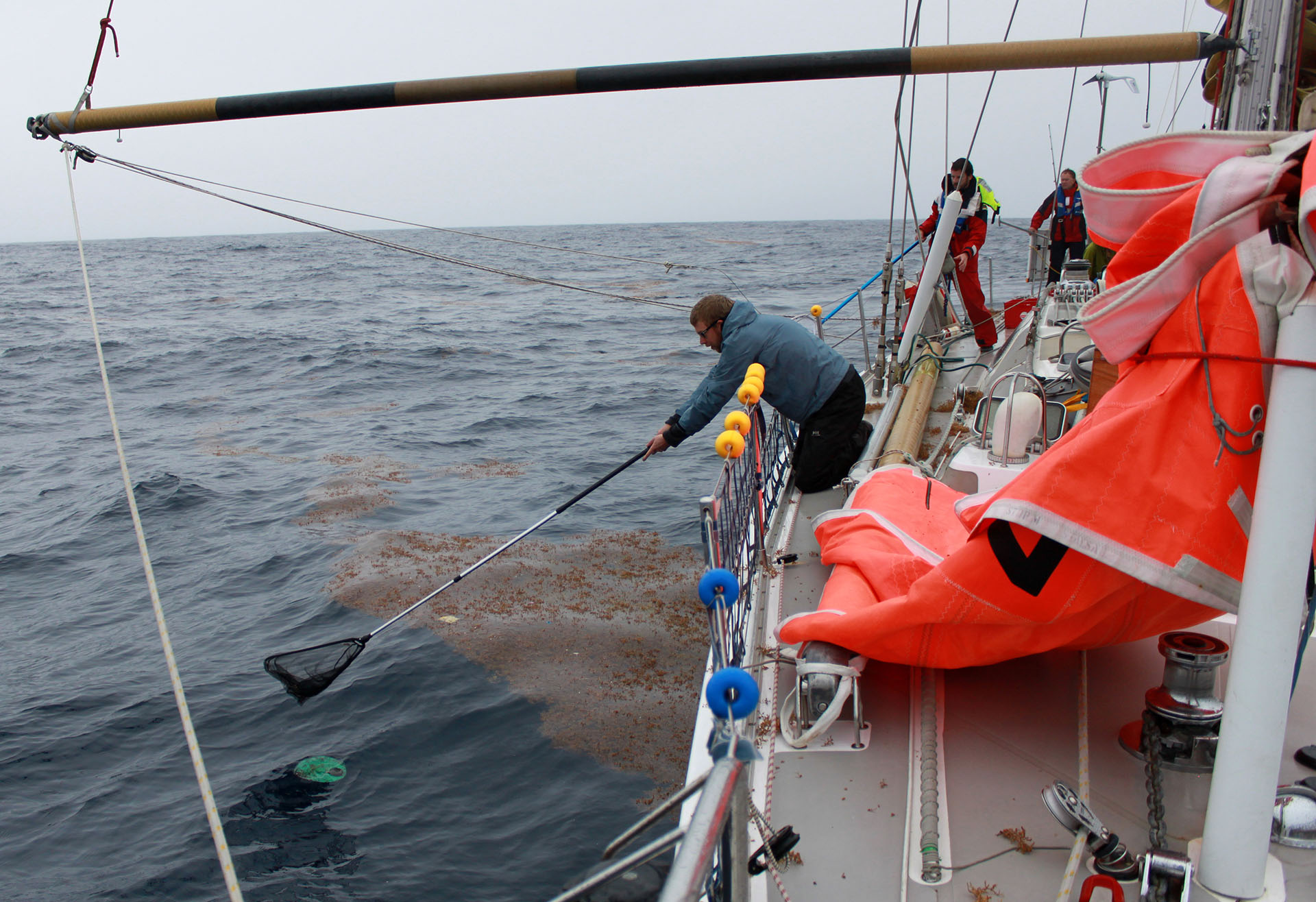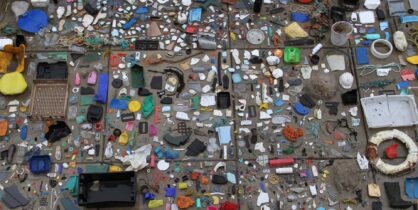The Plastic Reef Project, Part 2
Maarten Vanden Eynde’s Plastic Reef (2008-2012) is a sculpture made from melted plastic debris collected from several of the five world ocean gyres. An ocean gyre is a system of rotating ocean currents, predominantly caused by significant wind movements. In 2008, the artist discovered that there was a “floating landfill”, about the size of the United States, made up of these elements, swirling in the Pacific Ocean. He decided to visit this location and other gyres to collect material for his work, several hundreds of kilos of this floating waste, which he then transported to his studio and melted down to create Plastic Reef.
The sculpture is a comment on the problem of plastic pollution in the oceans as well as a reference to disappearing coral reefs around the world. As the artist’s trips progressed so did the growth of the reef, which has now reached a size of 5 x 4 m2. The project – www.plasticreef.com – aims to raise awareness about the effects of plastic pollution and its toxic properties.

Plastic is one of the slowest degrading materials and thus poisons the ocean’s food chain and causes a wide variety of diseases due to its chemicals. Plastic is also involved in a vicious cycle of production: significant plastic recycling is undertaken in China, which ‘imports’ plastic garbage from the west, transforming it into cheap goods and selling it back. The striking formal sculptural qualities of the work which recall the beautiful, colorful distinct sponge or cabbage-like abstract forms of natural coral reefs are at odds with the work’s material origins, an accumulation of waste. The work thus both seduces us but also serves as an ominous reminder of the consequences of the widespread use of what will be the longest lasting physical remnant of modern human ‘civilization’.

Virgin Plastic
“Virgin plastic” is a problem around the world. There is no beach and no area in the oceans which is free of these resin pellets – small granules generally in the shape of a cylinder or a disk with a few millimeter diameter. These plastic particles are industrial raw material transported to manufacturing sites where “user plastics” are made by re-melting and molding them into final products. Resin pellets can be unintentionally released into the environment, both during manufacturing and transport. Made from crude oil, the pellets work as magnets on oil-based ‘persistent organic pollutants’ (POPs), like CFKs, PCBs and DDTs that are dumped in the oceans. They store the pollutants and become chemical mini bombs, which fish take for food and inevitably end up on our plate. Japanese scientists are linking the recent rise in diabetes, heart disease, breast cancer, thyroid disorders, ADHD, infertility, erectile dysfunction, early-onset menstruation and obesity to the ingestion of Bisphenol A (the most common chemical in plastics) and other POPs by eating fish that have eaten plastics.
